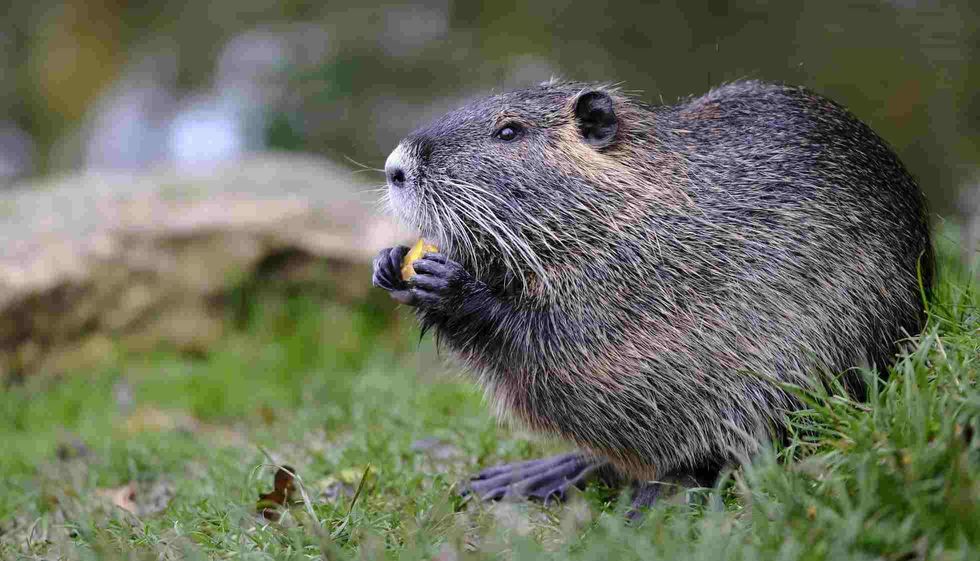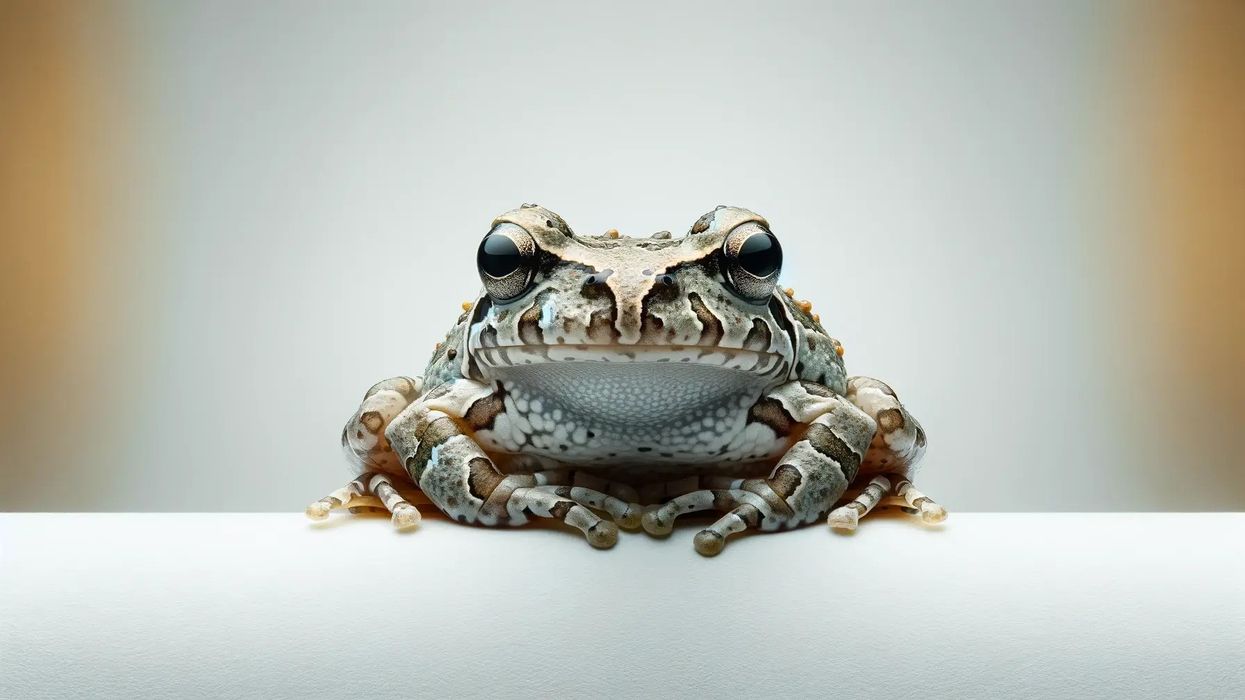Did you know Mountain beavers are the most ancient rodent species known to us? And by ancient, we mean archaic; they date back to Miocene geologic era, ranging from 5-25 million years ago.
What's more interesting is that they are not beavers; their name is a misnomer. They are named so, as they share some habits with true beavers like gnawing at barks of trees, cutting off branches, and such.
The only known existing member of its genus Aplodontia, the Mountain beavers are characterized by large protruding incisors and have a powerful sense of smell and touch. They are powerful diggers and mostly nest underground in their burrow systems.
The Mountain beaver burrows are extensive and comprise several tunnels, multiple entrances, and chambers. Mountain beavers do not hibernate and are active throughout the year.
However, they are primarily nocturnal for all overground activities. Since they are rarely seen out of their burrow systems, most people don't know much about their existence.
In this article, you will find a host of exciting facts about Mountain beavers, so read on. We also have some really fun information about the water shrew and Southern Short-Tailed Shrew, so check them out as well.
Mountain Beaver Interesting Facts
What type of animal is a mountain beaver?
A Mountain beaver (Aplodontia rufa) is a rodent found in western North America. Also known as Sewellel and a Boomer, it has a relatively stout body for its short limbs. Their binomial name Aplodontia rufa means simple tooth and reddish, respectively. They are not by any chance related to the North American and Eurasian Beavers.
What class of animal does a mountain beaver belong to?
A Mountain beaver belongs to the class Mammalia, order Rodentia and family Aplodontiidae. There are seven recognized subspecies of the Mountain beaver.
How many mountain beavers are there in the world?
As per the IUCN Red List resource, the Mountain beaver population is estimated in the range of 10,000-1,000,000. Although the geographic range of their habitat is specific, their population is abundant in the area they live, so their population status is not considered endangered.
Where does a mountain beaver live?
Their typical biome is moist forest areas; they prefer deciduous forests and are not commonly found in coniferous forests. Mountain beavers build their underground burrows in areas close to dense shrubs, plants, and vegetation.
They also need water bodies like streams and rivers nearby.
They are endemic to North America, and the geographic range of their habitat lies in parts of southern British Columbia to Northern California. Some population of Mountain beavers is also known to live along the Pacific Californian coast, and some dwell in the eastern part of California in the Sierra Nevada Mountains and Western Washington as well.
What is a mountain beaver's habitat?
Mountain beavers prefer forests with deep soils as it makes it easy for them to dig their burrow system underground. They do not travel far from the burrows and mostly stay within a few meters of their homes.
The Mountain beaver's burrows are very practically designed with multiple entrances with the nest sites at their center. There are five different compartments in their burrows: storing food, nesting, and three others for keeping refuse, fecal pellets, and earth balls.
The earth balls are used to plug the compartments when needed. The nest compartment has a carpet of dried leaves, and all the entrances connect to it.
The entrance tunnels of the burrows are concealed either by vegetation or are covered with a stick maze-like structure. When abandoned, the burrow is used by other animals in the forest like weasels, moles, mink, and salamanders.
Who do mountain beavers live with?
Mountain beavers are not very social animals. They like to stay alone but are found to dwell in forest areas as a colony, primarily due to the suitability of building burrows. Since their burrow ranges overlap often, these animals are known to defend their nesting place from others. Only during the breeding season do they pair with a mate.
How long does a mountain beaver live?
The typical life of a Mountain beaver in the wild is 6-10 years in the wild and six years in captivity.
How do they reproduce?
There is not much information known about the mating system of Mountain beavers. The typical breeding season is from February to April.
The gestation period lasts six to eight weeks, after which the female Mountain beaver gives birth to the babies. The Mountain beaver litters comprise of two to three offspring and, on rare occasions, four. The babies are pink, have no fur, and weigh about 09. oz (26 g), and do not open their eyes until 5o days.
At about eight weeks, the young Mountain beavers can function independently, and after a few more weeks, they move out of the nest to make their burrows. Mountain beavers are sexually mature at about two years of age.
What is their conservation status?
The Mountain beaver is listed as Least Concern by the World Conservation Union (IUCN). However, two of the seven recognized subspecies of Mountain beavers, namely A.r. nigra and A.r. phaea, are listed as Vulnerable by the IUCN.
Mountain Beaver Fun Facts
What do mountain beavers look like?
A Mountain beaver is characterized by a thickset body, short limbs, and a tiny furry tail. It looks like a medium-sized rodent, about the same size as a squirrel. It has dark brown fur and a pale white patch below the ears.
There is a scant covering of grayish-brown guard hair underneath its dull, coarse fur. It has a flat triangular skull, a short and thick neck, a slightly arched nose, and tiny eyes and ears.
It sports strong protruding incisors, long whiskers, and opposable thumbs. All its limbs have five pointy claws. They use their sharp claws to dig soil and then push the soil under their body.

*Please note the main image and this image are of a common beaver. If you have a royalty-free image of a mountain beaver, please let us know at hello@kidadl.com
How cute are they?
With its thick body and dull and coarse fur, the Mountain beaver cannot be referred to as a cute animal. They have a strange and unpleasant musky body odor too.
How do they communicate?
Mountain beavers are typically solitary animals and do not like other animals invading their dens. When defending their burrows from outsiders, they give out booming whistles, shrill squeals, and vocalize by grinding their large teeth.
The hearing of Mountain beavers is poor, and their eyesight is even worse. They can be considered almost blind. However, their sense of smell and touch is strong, which makes up for the lack of the other two senses. The Mountain beaver's tail acts as a supporting limb to help them sit upright.
How big is a mountain beaver?
A Mountain beaver is about the same size as a squirrel. Its total length is about 12-20 in (30–50 cm), including its tiny tail, which is about 0.4-1.6 in (1-4 cm).
How fast can a mountain beaver run?
Mountain beavers are slow to move around. These animals hardly go a few meters away from the burrow system. The imprints Mountain beavers leave on the ground are very closely spaced. They can climb small trees and shrubs in search of food. They are good swimmers too.
How much does a mountain beaver weigh?
The average weight of a Mountain beaver is in the range of 1.1–21.9 lb (500-1000 g).
What are the male and female names of the species?
There are no separate names for the male and female of the species. They are generally referred to as male Mountain beavers and female Mountain beavers, respectively.
What would you call a baby mountain beaver?
A Mountain beaver baby is often called a pup, kit, or kitten.
What do they eat?
They are herbivores. The Mountain beaver diet consists of all types of plant materials like leaves, grass, twigs, barks, and branches.
Their most preferred plants include forbs fern varieties like sword fern and bracken fern, willows, nettles, young tree saplings, and skunk cabbage.
Some of the food is consumed on the site, while a large part is cut, dragged, and stowed away in caches inside the Mountain beaver burrow network or stored outside the entrances of the burrows temporarily.
The kidneys of Mountain beavers are primitive and inefficient, so they have to drink water worth about one-third of their body weight every day.
Are they aggressive?
A Mountain beaver is not an inherently aggressive animal, but it can show aggressive behavior when cornered and can bite quite hard.
Would they make a good pet?
Mountain beavers are wild animals and have not been domesticated by humans in any way. They are asocial and do not make good pets.
Many foresters consider Mountain beavers as a pest as they can cause extensive damage to young saplings and small trees. Measures like encircling the lower trunks of trees with PVC sheets or covering young tree saplings with chicken mesh prove helpful.
To prevent Mountain beavers from causing damage to landscaped gardens and crops, people also use herbicides and burning that adversely affect the animal.
Another way to get rid of Mountain beavers is by using traps and toxic baits. The long-run control measures include reducing the Mountain beaver population through various means mentioned above and then continuing with maintenance measures so that the Mountain beavers do not invade the space again.
Did you know...
Lewis and Clark discovered the Mountain beaver in 1806 during their expedition in which they explored uncharted areas, mountains, and rivers.
As gross as it may sound, Mountain beavers eat their fecal pellets to digest any left nutrients. They also have a separate chamber in their burrow system where they store their twice-digested poop.
Hystrichopsylla schefferi, one of the oldest known fleas, feast on Mountain beavers.
Mountain beavers do not hibernate.
What is an example of how primitive the mountain beaver is?
Mountain beaver shows a host of primitive features, which is why it is often referred to as a Mountain beaver living fossil. The most prominent of the primitive characteristics is the Protrogomorphous zygomasseteric system.
The skull has no connecting attachment to the masseter muscles. The Mountain beaver is the only known rodent in existence with this primitive cranial and muscular feature.
Their kidneys are primitive and inefficient and cannot produce concentrated urine. They have to drink one-third of their body weight in water every day. That's the reason the Mountain beaver's natural habitat is riparian - they need a good source of water nearby.
What happens if mountain beavers don't chew regularly?
The Mountain beaver teeth are ever-growing. So, they need to chew on something regularly. It helps with the wear and tear of their teeth and stops them from overgrowing.
Here at Kidadl, we have carefully created lots of interesting family-friendly animal facts for everyone to discover! Learn more about some other rodents, including squirrels or woodchucks.
You can even occupy yourself at home by drawing one on our beaver coloring pages.










